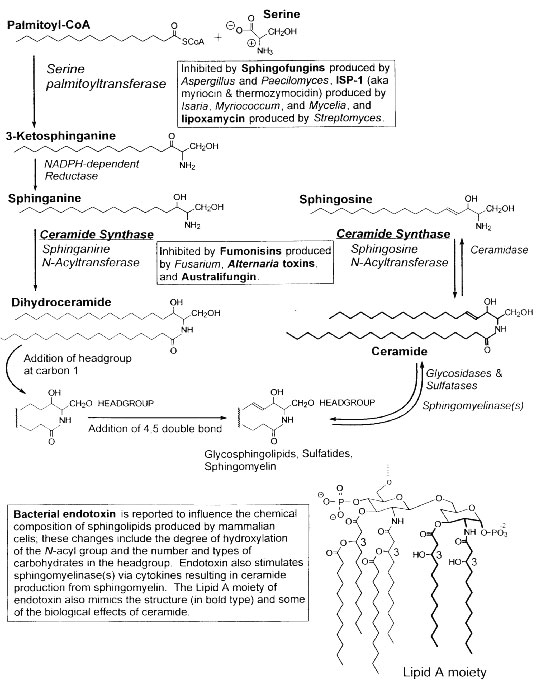Volume 3, Number 2—June 1997
Synopsis
Polycystic Kidney Disease: An Unrecognized Emerging Infectious Disease?
Figure 3

Figure 3. Sites of impact of endotoxin and mycotoxins on sphingolipid metabolism. In PKD, renal sphingolipid formation is altered. Such compromised sphingolipid pathways would be expected to be vulnerable to these highly potent microbial toxins, especially during chronic exposure within renal cysts.
Page created: December 21, 2010
Page updated: December 21, 2010
Page reviewed: December 21, 2010
The conclusions, findings, and opinions expressed by authors contributing to this journal do not necessarily reflect the official position of the U.S. Department of Health and Human Services, the Public Health Service, the Centers for Disease Control and Prevention, or the authors' affiliated institutions. Use of trade names is for identification only and does not imply endorsement by any of the groups named above.